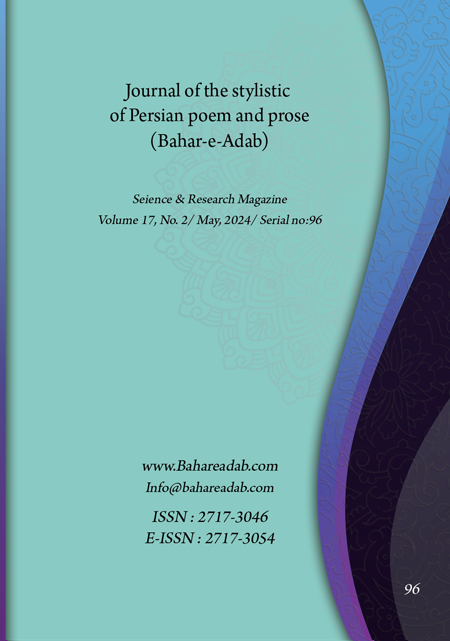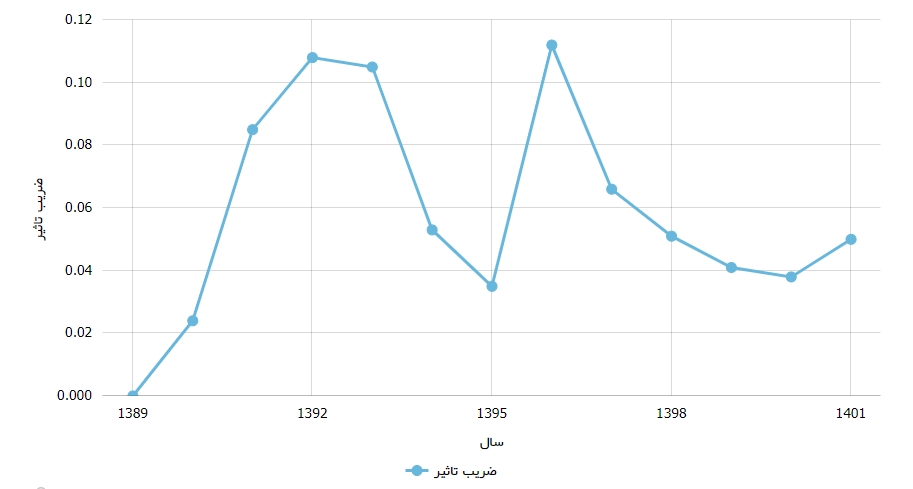Contact Us
address: Tehran Post Box 1558-14665Email: info@bahareadab.com
About the Journal
The Journal of the Stylistic of Persian Poem and Prose (former Bahar-e-Adab) is an open-access monthly publication focusing on the specialized field of Persian prose and verse stylistics. Founded by Dr. Omid Majd, this private monthly magazine published its first issue in the autumn of 2008 and, with the valuable scientific credentials of esteemed members of the editorial board, as well as the rich and valuable articles submitted by distinguished researchers, it achieved a valuable scientific-research rating in the summer of 2009 after a year and a half. This journal follows the Committee on Publication Ethics (COPE) and complies with the highest ethical standards by ethical laws. read more about this publication| Publication start year | 2008 |
| ISC Quartile | Q2 |
| ISC | 0.152 |
| Issue per year | 12 |
| Published articles in year | 180 |
| Acceptance rate (%) | 18.6 |
| Research papers | 1,795 |
| Article view | 3,370,770 |
| PDF download | 1,504,903 |
| No. of pages | 37,695 |
| No. of references | 28,720 |
AIMS
Persian language and literature covers a very wide area to the depth of one thousand two hundred years. In the meantime, the topics of stylistics and analysis of Persian poetry and prose texts have been at the center of the research of this Journal. Firstly, there is no other publication in this field in Iran and secondly, stylistics is one of the most specialized fields of Persian language and literature, which should be addressed after mastering the texts, rhetoric, grammar, history of language and history of literature. Therefore, dealing with this branch of literature is a kind of complement to other branches as well. The aim of the journal is to encourage researchers and scholars to research in this field.
SCOPE
The Journal of Stylistics and Texts Analysis of Persian Poetry and Prose pays attention to the following scope and the topics focusing on stylistics:
1- Study of one or more minor or general components during one or more periods, or several poets and writers in two different ways, such as: the study of contemporary poetry of children and adolescents, the study of religious poetry of the eleventh and twelfth centuries and a comparison with the ninth and tenth centuries, the evolution of exaggeration in the Khorasani style, the introduction of the wonders and their evolution in Persian poetry, the variety of applications of the equation style in Hafez's poetry and its comparison with others, ...
2- Examining the special features or innovations of a poet or writer in one or more rhetorical or linguistic or intellectual elements such as Saadi's innovations in ambiguity, special tricks of using Quranic verses in Jahangoshaye Jovini, special illustrations of candle by Saeb Tabrizi, sadness characteristic of Shahriyar’s style, musical analogies of Khaghani's poetry, ...
3- Introducing a revised manuscript of a poet or writer as follows:
Introducing the poet or author and his brief biography, introducing the corrected divan in terms of quantity and content, introducing the copies and their physical features, extracting the most important stylistic features of the version and possible innovations of the poet or writer, comparing the content of the book with previous and subsequent books Briefly and present the obvious and specific differences if any. Such as: Faqir Dehlavi; introduction of the manuscript of the Divan and his poetic style, review and introduction of the manuscript of Jawahar Khamseh, introduction of Golbon Kazeruni, poet of the Qajar era and Golshan Asrar, …
4- Stylistics of the works published in each of the intellectual, linguistic and literary layers or their sum, a partial study of an element is also acceptable provided that it has a high frequency and special initiatives and modes. Such as: stylistics of Anvari’s lyric poems, literary stylistics of precise poems, introduction of the anonymous satirical poet Mohammad Ali Fadaei and explanation of his position in contemporary satirical poetry.
5- Articles that examine the influence of poets or writers on each other, such as: effects of al-Ghazali's ideas on Saadi.
Notice: Articles based on the study of texts from the perspectives of Western theories, such as the theories of Bakhtin, Fairclough, Grimas, etc., are out of the scope of this monthly publication.





